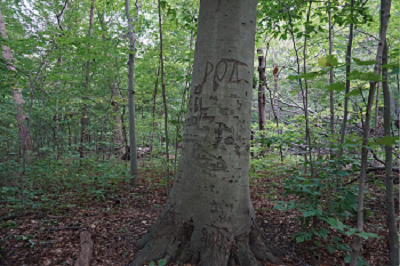Beech
 The beech is a large forest hardwood tree noted for its smooth silvery bark and its mast (i.e., its small edible nuts) which accumulate on the forest floor and are often food for animals. That’s what the dictionary tells us.
The beech is a large forest hardwood tree noted for its smooth silvery bark and its mast (i.e., its small edible nuts) which accumulate on the forest floor and are often food for animals. That’s what the dictionary tells us.What the dictionary doesn’t tell us is that the word beech is related to items you likely have on your desk or in your briefcase right now.
First, the word beech has its origins in the Proto-Indo-European (PIE) root bhago (beech tree), the source of Latin fagus (the scientific name for the beech tree). PIE bhago is the source of Proto-Germanic bokjon (beech), the source of Dutch beuk, Flemish boek, Old Norse bok, Old High German bouhha, German Buche, and Old English bece—all of which mean beech.
However, Proto-Germanic bokjon is also related to Proto-Germanic bokiz, the beechwood tablets on which runes were inscribed, the first systems of writing used by Old Norse and ancient Germanic peoples. From bokiz came German Buch (book) and Old English boc (book); in brief, a boc was made from the wood of a beech tree.
From bokiz to buch to boc to book—a book literally and figuratively comes from trees.
Similarly, the French word livre (book) and the English word library come from Latin librum (the inner bark of trees).
Perhaps it is not surprising to consider that over the centuries the tree has been a symbol of knowledge. Although this image might have to change if more and more people begin to get their knowledge from YouTube or social media!
Reference: Online Etymological Dictionary, https://www.etymonline.com/
Published on September 26, 2021 19:23
No comments have been added yet.



